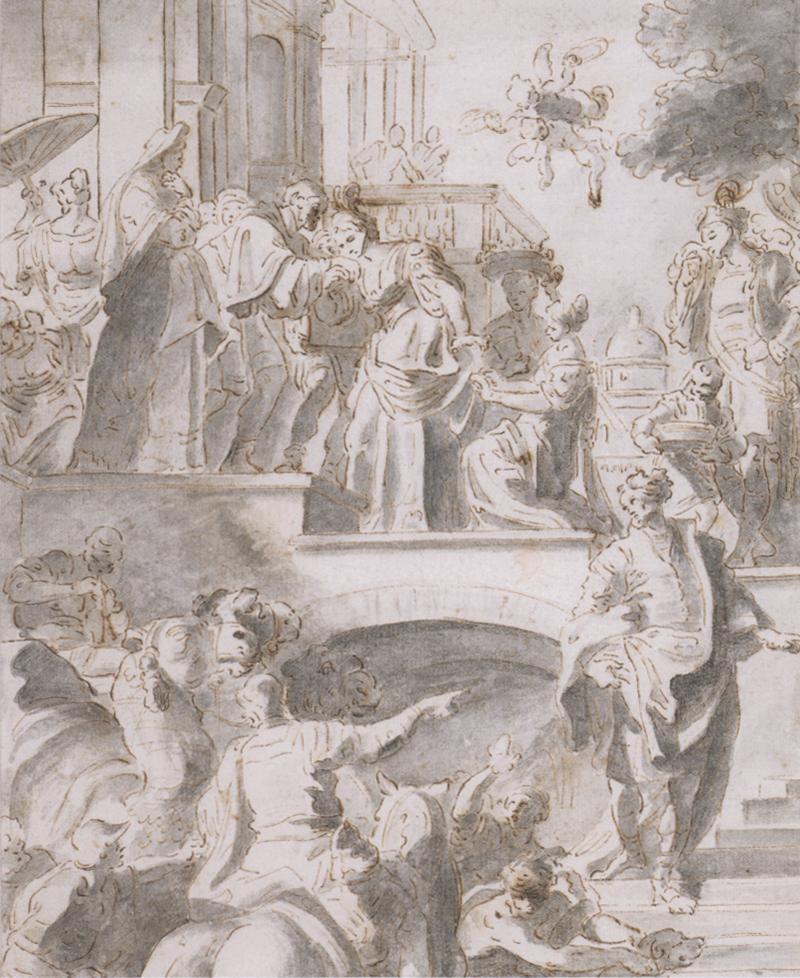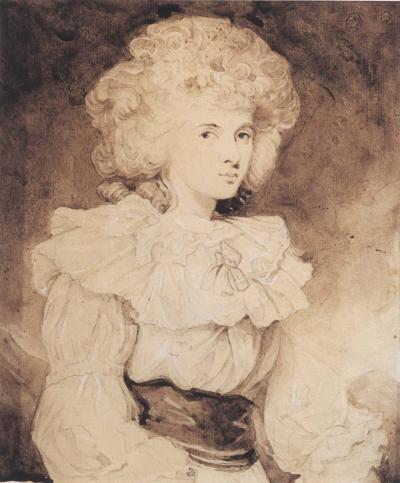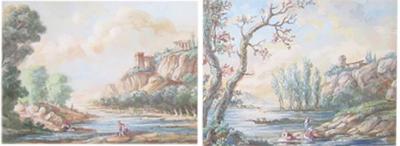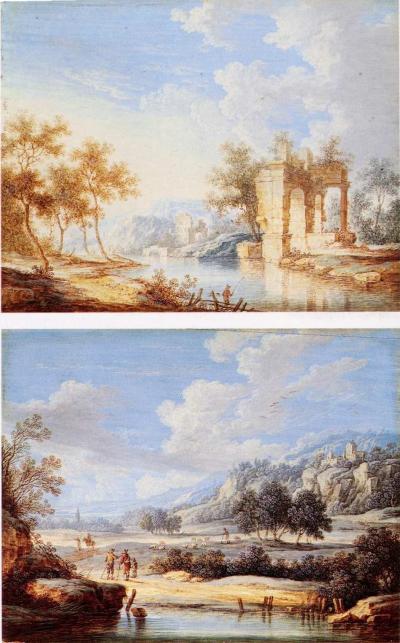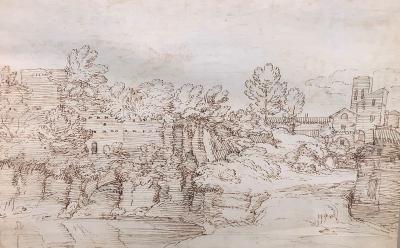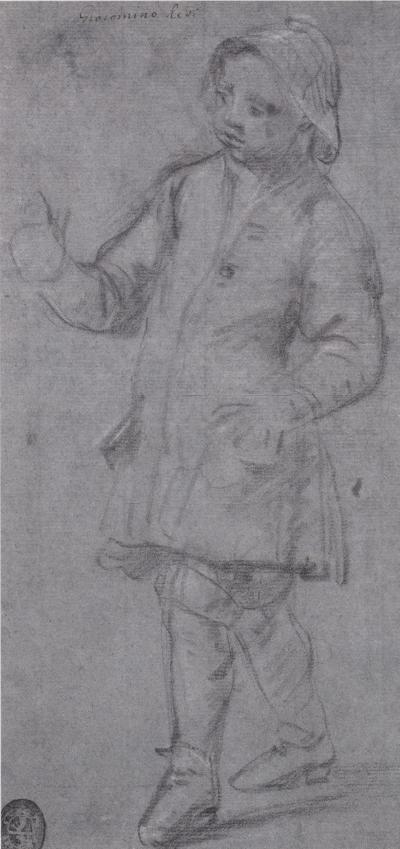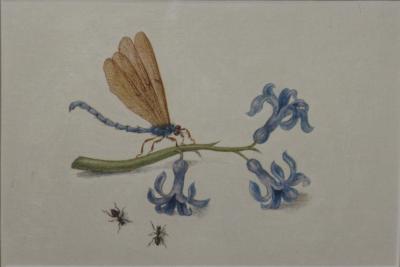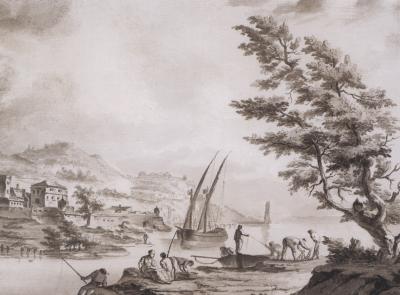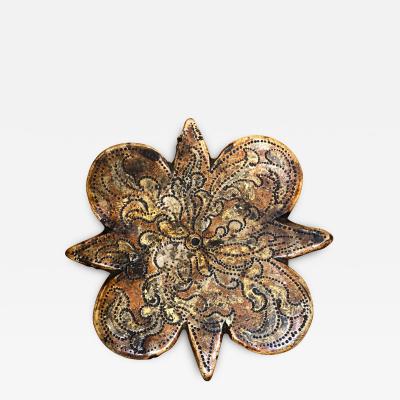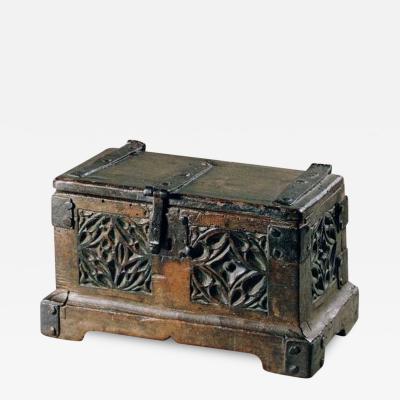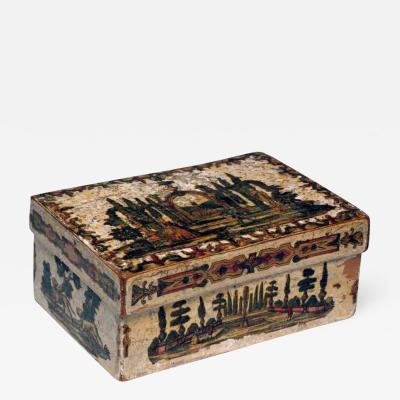Rachel Bidding Farewell to her Father before her Marriage to Isaac
-
Description
Francesco Solimena, called L’Abbate Ciccio, was one of the most important proponents of the late Baroque culture of Naples, as well as an important painter of Neapolitan naturalistic traditions. He was primarily a painter of history and architecture. Solimena was the son and the student of the artist Angelo Solimena.
Francesco planned to study literature, but thanks to Cardinal Orsini, who later became Pope Benedetto XIII, he was encouraged to follow his studies of painting, for which he had shown talent. Solimena was, early in his career, the artist of (in collaboration with his father) the altarpiece of the Vision di San Cirillo d’Allessandria in the church of San Domenico in Solofra.
After studying with his father, Francesco went to Naples in 1674 to work with the artists Francesco di Mario, followed by Giacomo del Po. In Naples, he came in contact with the new Baroque tendencies by studying the work of Pietro da Cortona, Giovanni Lanfranco, and Luca Giordano. Particularly important in defining the style of Solimena’s was the work of Mattia Preti, who inspired Solimena with his strong sculptural perception. These artists inspired Solimena’s naturalistic images, his great abilities as a decorator, and his solid forms and fine composition. Solimena painted two frescoes in the church of S. Giorgio in Salerno in 1680. The monumentality of the compositions and the figures has a scenographic aspect, displaying a clear and complete understanding of the commission he was given. A series of frescoes in San Paolo Maggiore is by his hand, as well as other frescoes in Assisi and Naples.
In 1702 Solimena was invited to Spain by Philip V and produced numerous paintings for the Royal Chapel in Madrid. In his later works, Solimena’s fantasy, the purity of the colors he used, and his depiction of the play of light were both decorative and highly realistic, harking back to early naturalism. Solimena was able to suggest miraculous situations, visions, saints, Madonnas, and angels with concrete individuality, as if they were people from daily life, and with the luminosity that distinguished his subjects. He was perfectly in step with the religious fervor of Naples of his time.
From 1630-1635 Solimena’s work returned to solutions of the Neo-Baroque. His painting had emotional tension, but was open to sensitivity to the contemporary world. Solimena combined naturalism successfully with the grandeur of Roman Baroque. He was reputed to be a talented still life painted although only fragments have survived. After 1690 Solimena’s work showed great clarity while his monumentality continued with drama that was imbued with the classicism of the Arcadian movement. His works were the most successful of his time in Naples and were prized in the major courts of Europe
Although he worked almost exclusively in Naples, Solimena became one of the most important artists in Europe in the first half of the 18th century. His works were the most successful of his time in Naples and were prized in the major courts of Europe. His works were requested by important patrons, such as Eugene of Savoy and Louis XV. He was also a fine musician and poet and had a large following of students. He founded his own academy, which became the focal point of artistic life in Naples, and where many artists were trained including, Sebastiano Conca.
This drawing represents an Old Testament scene in which Rebecca bids farewell to her father before she marries Isaac, from whom she has two sons, Jacob and Saul. Typical of the mature style of Solimena, this study is proof of his compositional skill and displays the particulars of the scene through the concentration of perspective, illumination, and chiaroscuro. The typologies and gestures of the figures mix, resulting in a theatrical effect thanks also to the adoption of an imposing architectural backdrop, which is evidence of having taking place upon a stage. The drawing is a preparatory study for the painting for the same subject at the Fesch Museum of Ajaccio (inv. 852-1-228, oil on canvas), executed by Solimena at the height of his fame (1715-17), a period when he was given the commission to paint the counsel room and to paint the seat of the senate in Genoa. Today, only preparatory drawings exist of these works.
His preparatory sketches, which recorded his early ideas, could be also of elaborate composition. In Solimena’s earlier drawings he used a light grey wash, later becoming more dramatic. The earlier work was brilliant and free, the later work highly finished and elegant, ready to transform to an oil painting. -
More Information
Documentation: Documented elsewhere (similar item) Notes: Solimena’s works can be found in museums in France, including the Louvre, in Germany, Holland, Vienna, the Hermitage, Moscow’s Roumanzeff Museum, National Gallery in London, Prado in Madrid, the Brera in Milan, Naples, Museo Nazionale in Rome, Doria Pamphili, the Vatican, and Accademia in Venice Origin: Italy Period: 18th Century Materials: Pen and brown ink and gray wash on cream laid paper Condition: Good. Creation Date: 1657-1747 Styles / Movements: Old Master, Other Incollect Reference #: 305533 -
Dimensions
W. 9.38 in; H. 7.5 in; W. 23.83 cm; H. 19.05 cm;
Message from Seller:
L' Antiquaire & The Connoisseur, Inc. specializes in European works of art, antiques, and paintings, with a rich history dating back to 1935. For more information, contact us at 212.517.9176 or info@lantiquaire.us.















